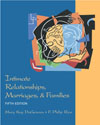Dating is rare in most of the world and did not become established in the United
States until the years after World War I. Formal courtship declined in the early
twentieth century, replaced by dating, which was influenced by the advent of
the industrial revolution, the rise of free public high schools, increased affluence
and leisure time, the invention of the automobile, and the rise of the women's
equality movement. Dating norms have changed, from the "rating and dating
complex" of the thirties to the more informal patterns practiced by younger
people. Dating fulfills important functions, such as recreation; companionship,
friendship, and personal intimacy; socialization; personality development; opportunity
to try out gender roles; love and affection and the opportunity for sex; mate
sorting and selection; and preparation for a longer term partnership or marriage.
Individuals meet people to date through friends; at parties, work, or in class;
as well as in singles bars; through personal ads; dating services; and computer
networks. Dating problems include those associated with meeting prospective
dates, changes in gender roles, honesty and openness, closeness and distance
issues, behavior of dates, unwanted pressure to engage in sexual activity, sexual
aggression and dating violence, and extradyadic relationships. Although breaking
up a relationship can be very painful, mutual discussion rather than unilateral
action can minimize pain. |



 2002 McGraw-Hill Higher Education
2002 McGraw-Hill Higher Education